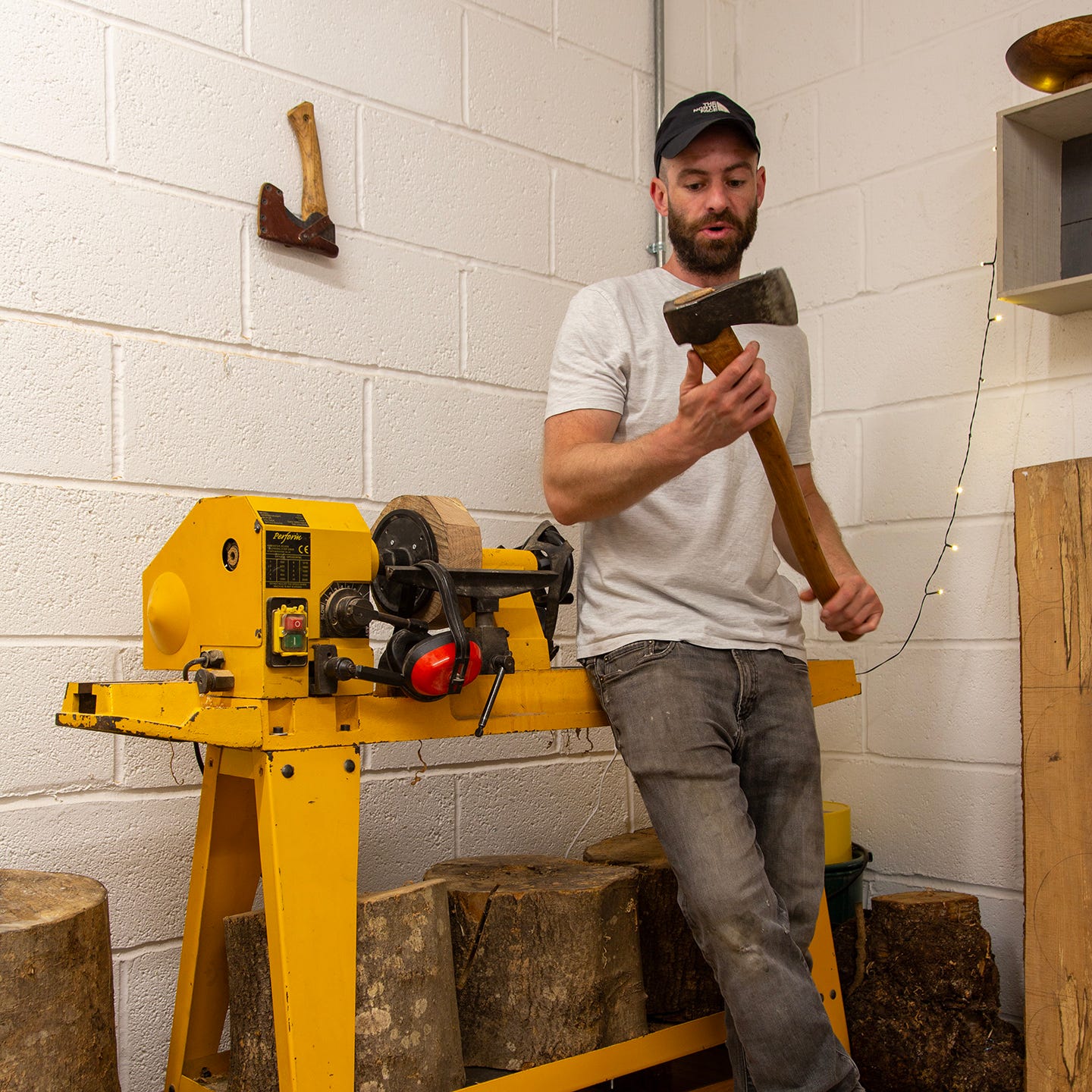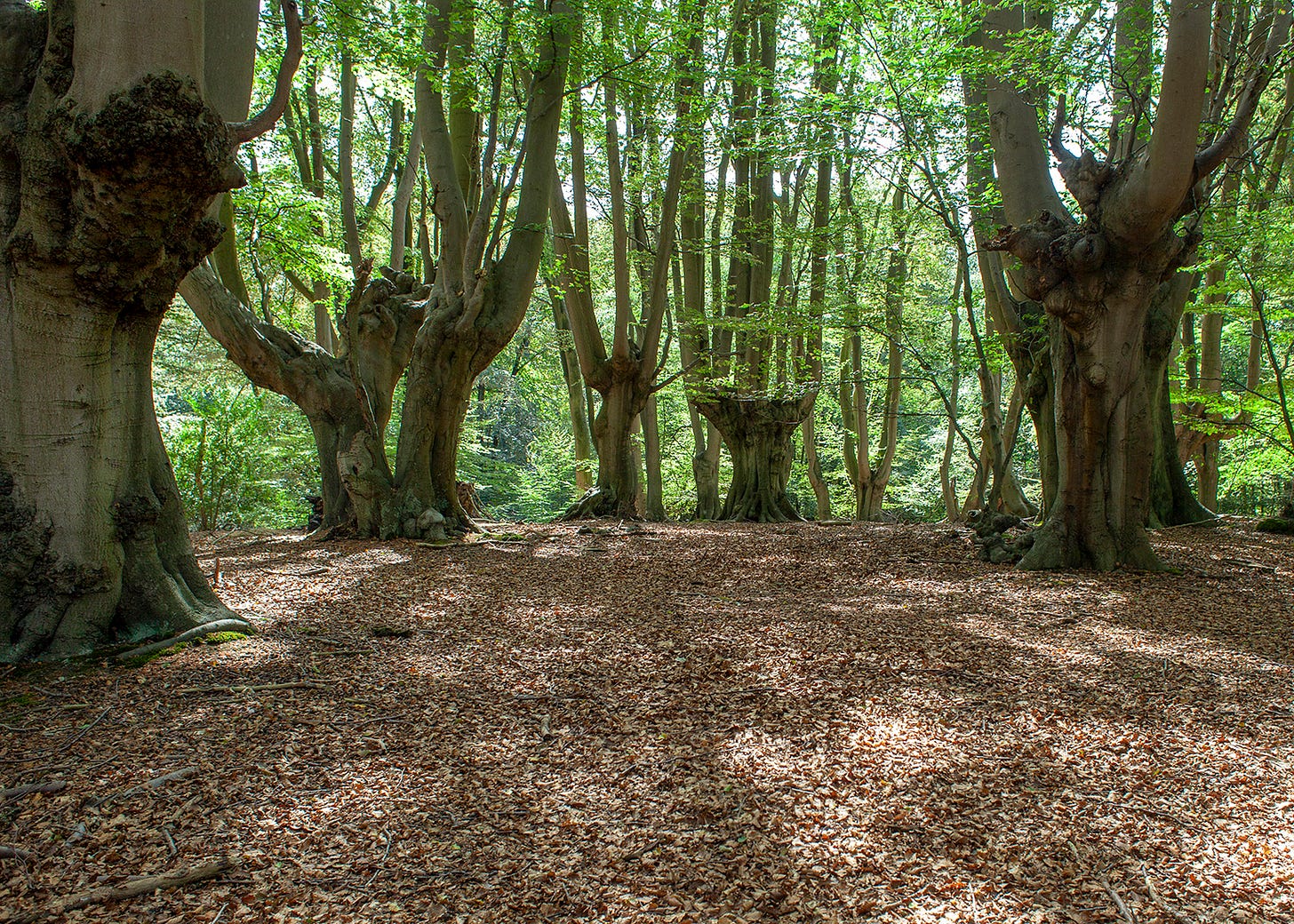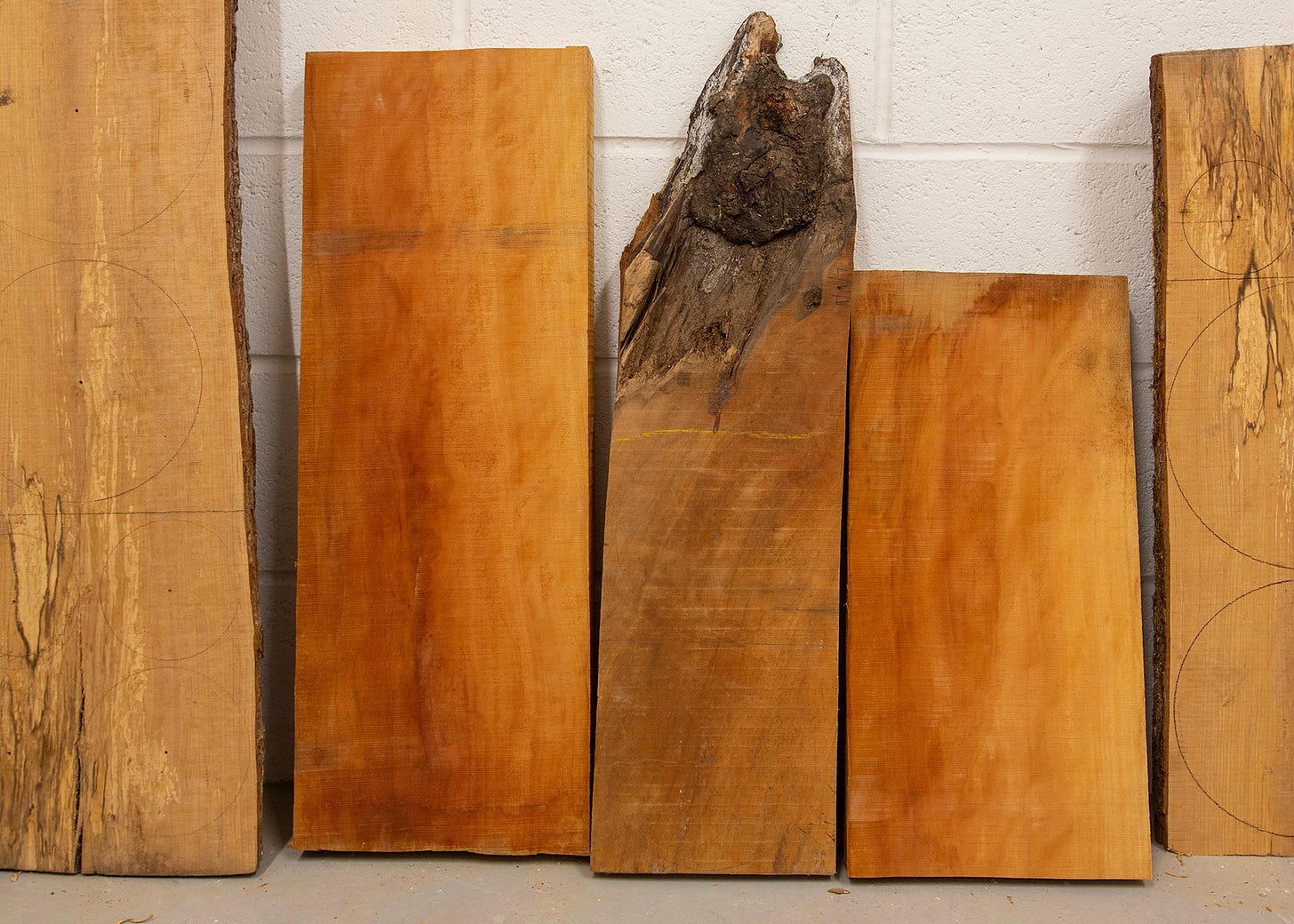Tales from the Urban Forest is a quarterly column from the writer
, which focuses on London’s flora, fauna and its landscapes.Paul is the author of several books about trees in London including London is a Forest, and the editor of the Great Trees of London Map published by Blue Crow Media.
His column deals with the city’s unregarded landmarks, the wild inhabitants who may have occupied the city for hundreds of years, the people, policies and ideas that have influenced the environment, and the precarious entanglement of humans and nature in this ever-evolving city.
In this summer instalment, Paul discovers why wood from trees either felled or pruned in London mostly goes up in smoke, and talks to two people who are rethinking how this valuable resource could be used more positively.
London is a city of 9 million trees, so it stands to reason that, at any time, there are hundreds or even thousands that will need to be pruned or even felled. Having said that, some, like the Oakfield Road Plane, a perfectly healthy tree in north London, should be left alone in order to provide the essential ecosystem services this city so desperately needs. Only large, mature trees will have any real impact on pollution and climate once the overheads of transporting and planting them is considered, so we must remain vigilant for tree felling overreach by landowners, developers, and local authorities.
But, have you ever wondered what happens to all the wood from trees that must be felled or have their canopies trimmed?
Mostly it gets chipped. If you have ever spotted guys in white helmets and fluorescent suits dangling high in the trees with chainsaws in hand, you might also have noticed the chipper that accompanies them. These innocuous looking machines briefly but frequently spring into high decibel action to make short work of branches, twigs and leaves. They produce a pile of wood chips that might be used for garden mulch but most is simply burned as biomass. Biomass is claimed to be a ‘renewable carbon neutral’ fuel source, but these claims are facing increased scrutiny. Regardless of the pros and cons of using urban trees for biomass, chipping seems like a rapid and sad end to timber that has taken decades to grow, so might there be another way?
There are people out there who are beginning to rethink how we can make use of the fine timber that grows, literally, on our doorsteps. I’ll get on to them shortly, but first some history…
Everything you ever wanted to know about pollarding and coppicing…
In days of yore, London’s remarkable ancient woodlands (like Oxleas and Highgate Woods) were managed sustainably to provide fuel, wood for fencing, small artisanal items, and even timber for building. Evidence of this ancient industry can still be glimpsed as centuries-old coppice stools. Now they are overgrown, but once these multi-stemmed trees would be cut to the ground every few years to supply a ready supply of long, straight poles. In other places you can still find eerie pollards, where branches were lopped back to a bole high enough to keep re-growing shoots out of reach of grazing animals.
Coppicing was probably last carried out commercially in London at the beginning of the twentieth century, while pollarding – in London, a woodland management practice restricted to Epping Forest – ended abruptly in 1878 when the City of London Corporation became the forest’s ‘Conservator’. The chief woodland product was charcoal, used for all manner of things including baking, smithing and heating, but in the face of a rapidly growing population and abundant cheap coal, the supply of charcoal from London’s woods became so inconsequential that its production fizzled out. This left the few remaining woodlands to become fantastic deep, dark sanctuaries where Londoners can escape the frenetic city.
Today, most of the trees that are felled or lopped in London are those in our parks and gardens, on our estates and those growing on our streets. We import the vast majority of the timber we use, and so it is surely a reasonable question to ask “why don’t we use the timber from the trees we cut down every day in London to make stuff with?”
Local wood for local people
This is exactly what one company in east London, Fallen and Felled are doing. Setup by Bruce Saunders in 2017, it was the first and only supplier of homegrown timber in London and as Bruce puts it they “give London’s trees a second life”. Over the last six years they have sourced, seasoned (the process of slowly air-drying freshly cut timber) and supplied wood to furniture makers, craftspeople, kitchen fitters, architects and even the City of London.
Bruce says they have dealt with hundreds of trees and are now handling two trees every week. They could take more, he says, but it is difficult to get hold of trees of the right size and quality and, even then, they have to be in accessible locations. To complicate matters, councils, landowners and arboriculturalists often allow perfectly good and accessible trees to be chipped rather than giving them a second life. A case in point was the Hardy Tree, a famous ash tree that succumbed to a storm in December 2022. Bruce was straight on to the council to see if he could rescue the timber only to be refused and to discover the tree branches had already ended up as biomass. The carcass remains in situ in Old St Pancras Churchyard to this day.
Bruce told me that his shock at how many London trees were going to waste motivated him into setting up Fallen and Felled, and that he felt it was possible to do more with the high quality hardwood from these trees. There are many benefits for using locally sourced timber, not least the carbon footprint of wood that is felled, seasoned, transported and fabricated locally is much less than for timber sourced from a Scandinavian forest, or even a Scottish plantation. Compared to burning, it is a no brainer: carbon remains locked up in wood that otherwise just goes up in smoke.
There is a ready market of designers, architects and craftspeople who want to use London wood for all these good environmental reasons, but also because wood from trees grown in London has a compelling but intangible property: amazing provenance. One of the most frequent species growing in London is the city’s eponymous plane tree. The wood from London plane is one of the most attractive, but before Fallen and Felled came along it was almost impossible to get hold of. They have effectively created a market and now London plane can be seen in high end furniture, interiors like the L’Estrange store in Coal Drops Yard and as stunning artisan objects.
This is a special contributor issue of London in Bits. All our contributors are paid fairly, and that’s only possible because of the support we get from your subscriptions.
Click here to subscribe and get a whole week of issues free:
New Craftsman: Skapa Woodturning

One customer of Fallen and Felled is Mike Groves (above), aka Skapa Woodturning, a designer who switched on to woodturning during lockdown. In a previous life, Mike was an archaeologist, but while unable to dig during the pandemic, turning became an obsession for him. Remarkably, Mike is self-taught. He set himself the challenge of turning four bowls a week and, after months of lockdown, he had served a solitary apprenticeship in an ancient craft. Although, the idea of his work being an exercise in some long-dead craft is something Mike is keen to distance himself from.
“My work is a f*** you to heritage craft” he says, going on to explain that some woodcraft purists want to recreate forms and working practices in use centuries ago, whereas he is quite happy to use ‘modern’ tools like a powered lathe and a bandsaw.
Before I met Mike, wood turning conjured up lumpen bowls garishly coated in glossy varnish piled on a trestle table by an ageing hippie (or a retired accountant) at some country fayre. But Mike’s work is different. For a start he does not use varnish, instead his work is oiled so the wood is exposed to the world and its tactility can be experienced. His elegant bowls and platters are simple, and his material is shown off to its glorious best in the functional designs he produces. In fact Mike calls his wide Asian-inspired vessels ‘Fodder Bowls’ and insists they should be used to eat from.
When I visited Mike’s workshop in Woolwich I discovered a cornucopia of finished products, raw materials, industrial machines and some very, very sharp tools. There are shelves filled with wooden objects below which are huge logs, some with their bark intact, and great planks of roughly sawn wood. I was immediately struck by the difference in the colour, texture and figuring of the various types of wood which is enhanced in the finished bowls and platters, each utterly unique while the shapes are broadly repeated.
His work reminded me of mid-century ceramics (I had recently seen the excellent Lucy Rie show at Kettle's Yard in Cambridge), which I put to Mike by way of a compliment. It seemed to go down well, and he explained that he was very interested in Asian ceramics albeit from a much earlier time, specifically Japanese Chawan and Korean Buncheong wares for their simplicity and ergonomic designs. While forms are similar between wood and ceramic work, they are very different materials, so were there any references from his own field? “Look up George Lailey, the master of English wood turning,” Mike told me. Lailey died in 1958 leaving a lifetime of turned wooden items mostly made from wood procured locally in Berkshire where he lived and worked all his life.
There’s an indirect connection between contemporary urban woodwork, and the rustic work of Lailey, much of which is a hundred or more years old. Lailey’s work was beautiful and functional, and used materials that were available to him in the English countryside, specifically elm, a pleasing warmly coloured wood with pronounced grain. Mike is also concerned with material and its provenance, and he is able to tell me exactly where every bit of timber in his workshop came from.
On one shelf a series of bowls of a remarkable deep brown, knotted material stood out. “These are from one of the London plane trees felled at Euston for HS2,” Mike tells me. I am immediately conflicted about handling these incredible pieces of wood which are at once repellant because they are a token of trees felled unnecessarily but - and this feeling wins out - they are also awe-inspiring. Here are objects that are made from iconic trees that have been a visible part of the city’s fabric for generations and are a memorial to human destructiveness and the protests that ensued. Mike’s work is such a good use of the wood, it represents an afterlife for the tree, one that has the potential to last as long as the tree grew, its carbon locked up in an object that will always be its memorial.
There are other woods to admire. Mike shows me ash, horse chestnut, walnut, beech and elm pieces, each with its own distinct character. But the majority of Mike’s work is hewn from London plane. “I want to be known as the London plane guy,” he tells me, and I can understand why. As well as his work with the Euston tree, Mike has pieces made from other individual trees, including one felled at Denmark Hill. These are less knotted, lighter in colour and show the distinct figuring known as ‘lacewood’, a feature typical of London plane wood. It is produced by tiny capillary-like structures – medullary rays – crossing the wood grain producing a delicate shimmering texture. Presumably it once reminded someone of fine lace work and the name has stuck. It is certainly intricate, but I can’t see a comparison with my grandmother’s antimacassars. While lacewood is not unique to plane wood, most plane wood displays it.
In the world of fine woodwork, Bruce Saunders and Mike Groves are two people who have a passion for their material, and an acute sense of where it comes from. What they have achieved is a blueprint for how our society can work with local materials: through the sensitivity they apply to the value chain of wood, from its source to functional objects, they are addressing our concerns for sustainability and environmental protection. By owning and using a Skapa bowl made from Denmark Hill plane wood or by purchasing planks of Barnet ash from Fallen and Felled, Londoners are buying into a process that gives new value to our trees. The knowledge of where the material is sourced can make us aware of another facet of the place we inhabit and, in a roundabout way, help contribute to the conservation of London’s urban forest.
Fallen and Felled have a shop in Walthamstow open on Tuesdays, Thursdays and Saturdays. Details on their website. Find them on Instagram.
Mike Groves may be familiar to some from when he appeared on the BBC’s Make It At Market. Skapa Woodturning has a website where Mike Groves’ beautiful turned wood can be bought. Find them on Instagram too.
Find Paul’s newsletter, The Street Tree, here:
5 little bits
It has not been a great few weeks for Canary Wharf. Not only did it have to suffer the indignity of being covered in orange paint by Just Stop Oil protestors last Tuesday, but then HSBC announced that it was going to leave its dockside headquarters for a new, smaller home near St Paul’s, when its lease expires in 2027. It’s estimated that the bank’s departure will knock £542M off the value of the area’s office portfolio, and just like that all those articles proclaiming ‘Canary Wharf’s post-COVID comeback’ don’t look so great. In yesterday’s Observer Rowan Moore was asking if this is “the end for Canary Wharf,” while in the FT (which, just five days ago, was claiming Canary Wharf was ‘changing not dying’) Edwin Heathcote seems pretty convinced that there’s no coming back for the “moated, gated, privatised space divided from the rest of London”. The Times and The Telegraph try and look on the bright side, with both papers focusing on Canary Wharf’s ambition to become a tourist destination. “How do you turn the most corporate, concrete, soulless corner of the city, five miles from Trafalgar Square, into a place that people actually want to come and visit?” asks Greg Dickinson in The Telegraph. Well, quite.
The next chapter in the Hondo Tower saga is due to unfold later this month when the public representation hearing for the development at Pope’s Road in Brixton takes place at City Hall on July 21st. The history of the controversial 20-storey tower is too long and complex to go into here, but Jason Cobb has written a good summary for Brixton Buzz, which concludes with the prediction that City Hall will “more than likely reject the application based on the proposals put forward”.
The City of London Corporation has approved the plans to redevelop the ‘St Paul’s gyratory’, i.e. the area to the north of the Cathedral. The development will pedestrianise one side of the gyratory and install a new 3,000sqm public space at the cost of around £15-17 million. If you don’t want to wade through a bunch of council PDFs, Ian Visits has a good rundown of what’s planned.
John Lewis has continued its move into the property market by submitting a planning applications to build 800 rental homes on sites in West Ealing and Bromley. John Lewis has told CityAM that “just over a third of the 428 new homes in West Ealing and 353 in Bromley will be affordable and targeted at key public sector workers such as nurses or teachers” (the Ealing development has been previously criticised for being too tall and not having enough affordable housing).
Or, you could just rent a four-bedroom flat in Knightsbridge for £9,000 a week. It’s called ‘super prime’ renting apparently, and there’s absolutely nothing insane about it at all.










This is lovely. And how fabulous to give those trees another life as treasured objects. I bet the people who live with these trees, see them every day on their way to work, and mourn their passing would love to know about this second life and would be keen to purchase a piece of 'their' tree. I know I would.